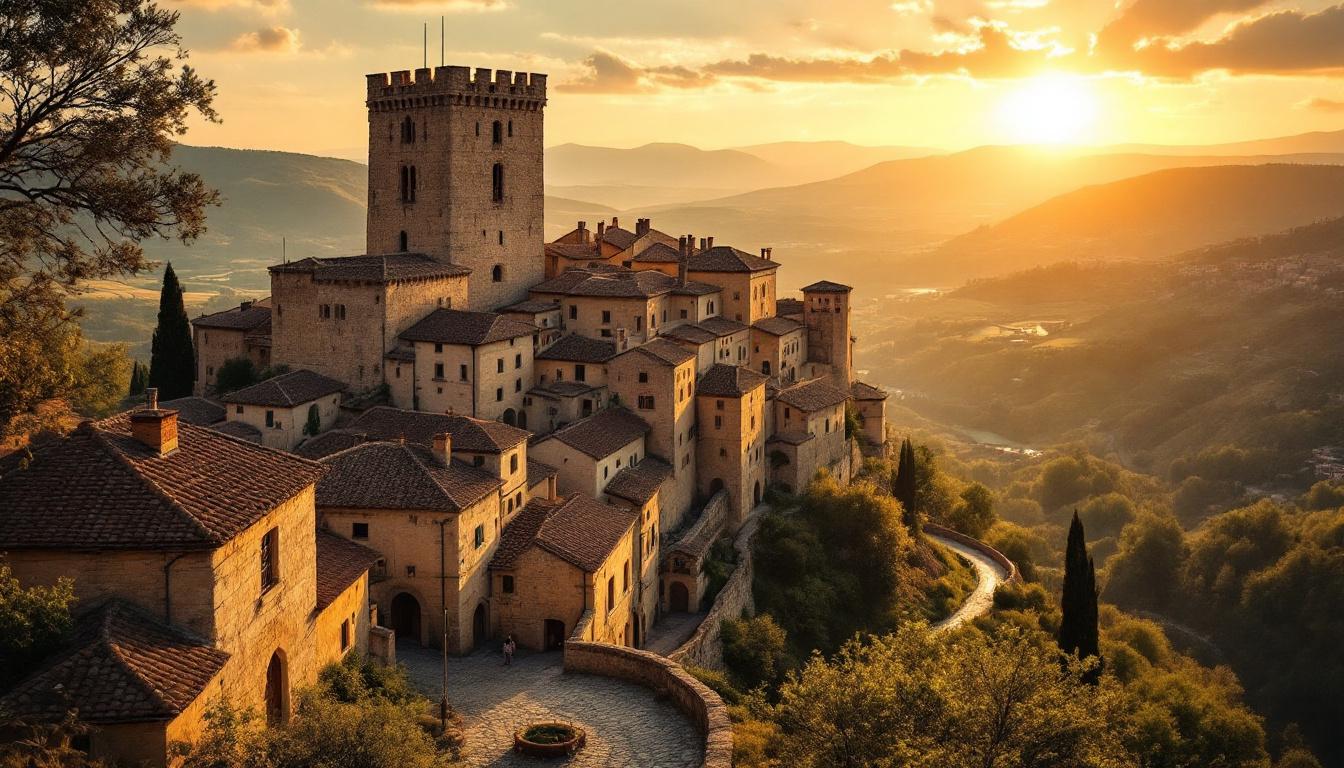Hidden within southeastern France’s sun-drenched hills, Le Poët-Laval stands as a medieval time capsule that most American travelers have yet to discover. This enchanting village, officially recognized as one of “Les Plus Beaux Villages de France,” offers a rare glimpse into 12th-century life while delivering the authentic French countryside experience that Instagram filters can only attempt to capture.
A fortress with crusader connections
Founded by the Knights Hospitaller of St. John of Jerusalem, Le Poët-Laval’s origins stretch back to the 1100s when it served as a commandery protecting pilgrims journeying to the Holy Land. Today, the imposing medieval castle with its commanding donjon (keep) stands sentinel over the surrounding Jabron Valley, whispering tales of knights and religious wars.
“Walking through Le Poët-Laval feels like stepping through a portal in time. The stones beneath your feet have witnessed nearly a thousand years of history,” explains local historian Marie Dubois.
Car-free cobblestones that transport you back centuries
Unlike many tourist-heavy destinations, Le Poët-Laval maintains its medieval character through strict preservation. Vehicles remain outside the village perimeter, allowing visitors to wander 16th-century streets undisturbed by modern intrusions. The honey-colored stone buildings with terracotta roofs create a harmonious architectural ensemble that photography enthusiasts will find irresistible.
Protestant heritage preserved in stone
The village houses the fascinating Museum of Dauphinois Protestantism, housed in a 17th-century former temple. This unique cultural institution chronicles the region’s significant role during the Wars of Religion – a compelling historical narrative rarely featured in typical French tourism. For those fascinated by religious history across cultures, Spain offers similar religious heritage exploration in cities like Toledo.
Artistic soul in ancient surroundings
The Centre d’Art Yvon Morin breathes contemporary life into the village’s medieval bones. This cultural hub hosts rotating exhibitions and summer concerts, including the popular “Jazz Poët” festival. The juxtaposition of cutting-edge artistic expression against centuries-old architecture creates a uniquely stimulating atmosphere, similar to how architectural contrasts outside Paris challenge our expectations.
Secret vantage points for photographers
Sunrise chasers should position themselves at the village’s western edge, where morning light bathes the stone buildings in golden hues. The “Salon des Commandeurs,” a 15th-century hall within the castle complex, offers dramatic interior light play through ancient windows – a photographer’s dream during midday hours when sunbeams cut through dust motes like spotlights.
Lavender fields and mountain vistas
The surrounding countryside delivers quintessential Provençal landscapes that rival more famous (and crowded) Luberon villages. Hiking trails weave through lavender fields, vineyards, and olive groves. For those seeking pristine environmental experiences, this offers a sustainable alternative to eco-tourism destinations in the Maldives.
“The light here changes everything – it’s what drew me to paint this landscape for over twenty years,” says American artist Robert Callahan, who relocated from Montana to the Drôme region in 2002. “There’s a luminosity that transforms ordinary stone into something magical.”
Practical considerations for your visit
Le Poët-Laval sits 20km east of Montélimar, making it accessible as a day trip. Park at the village base and explore on foot. Visit between April and June for optimal weather and fewer crowds. While accommodations within the village are limited, nearby towns offer options for overnight stays.
For travelers seeking authentic French experiences beyond tourist hotspots, Le Poët-Laval delivers medieval charm, cultural depth, and stunning natural beauty without the crowds of better-known destinations like Nordic capitals or high-altitude South American cities. This hidden gem in the Auvergne-Rhône-Alpes region promises an immersive journey into France’s medieval soul.
